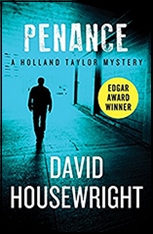REVIEWED BY DAN STUMPF:
ED LACY – Sin in Their Blood. Eton Books E111, paperback original, 1952. Macfadden #50-255, paperback, 1966. Black Curtain Press, softcover, 2013.

To my mind, Ed Lacy occupies a place firmly in the upper second rank of hard-boiled writers of the last century. Maybe not up there with Hammett, Chandler, and (insert a few names of your own) but definitely right up there with Charles Williams, Peter Rabe, and (insert etc. etc.)
Lacy’s writing offers smooth prose, plotting that hooks the reader and moves things right along, and characters who seem unique enough to be real, without the flamboyant eccentricities that mark too many patently fictional creations.
I did some reading up on Lacy, who turns out to have been Len Zinberg, born in 1911 and raised in an affluent Jewish family on the fringes of Harlem. Not surprisingly, considering that time and place, Zinberg got involved in the Harlem Renaissance and left-wing politics of his day, and these show up in Lacy’s writing.
Sin in Their Blood opens with Matt Ranzino returning to his home town after a year in a VA hospital following service in Korea. Seems he was formerly a PI, and before that a cop, and before that a prizefighter, so he has all the qualifications necessary for a paperback hero, except that he contracted Tuberculosis in the Army and now feels super-cautious about undue exertion.

By the way, Zinberg suffered from heart trouble all his life, so when Lacy writes about debilitating fatigue and panic, he knows how to put it across.
Getting back to the story, Ranzino finds himself reluctantly drawn into a murder investigation, and just as reluctantly lured back toward his old PI Agency, which is now making big bucks off McCarthyism and the Red Scare, blackmailing vulnerable types who may have joined a pinkish organization back in the 1930s, or maybe signed a petition against capital punishment for the Rosenbergs or some such.
Lacy moves his hero through a potentially preachy miasma without getting didactic, even when the title of the piece — Sin in Their Blood — turns out to refer to a couple murdered because he was passing for white, with her knowledge. There’s also a plucky lady involved with Matt who insists on getting a job and making him share the household chores. And just to put this in perspective, this was written in 1952 — in 1974, when my wife went to get a credit card in her name, she was asked if her husband would object.
But most impressive (to me, anyway) is that Lacy keeps all this subtext in the background. This book moves fast and it moves well, with all the shady hoods, loose ladies, fights, and shoot-outs one looks for between the gaudy covers of a paperback. Enjoy the flash, appreciate the substance.

